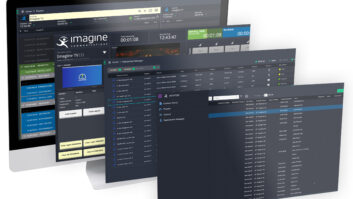TV broadcasters’ live and on-demand offerings continue to make up the vast majority of video viewing time because they satisfy the largest number of viewers’ needs, according to study published today.
The Age of Television study, commissioned by the UK’s TV marketing body ThinkBox, identified eight reasons why people watch video (see below) across all platforms.
According to the study, the most popular reason we watch TV is to unwind (26 per cent) with ‘distract’ coming in second (18 per cent) and ‘comfort’ (shared family or couple time) in third place (16 per cent).
Ten per cent also like to watch TV communally (a need state described as ‘Experience’) which involves watching TV watching live or joining social conversation about what’s on.
Only two per cent of all viewers watching video to seek out useful practical information (a state described as ‘Do’) with YouTube dominating in this category with 56% viewers accessing the service for informative reasons.
The study, conducted by research and strategy consultancy MTM, took these ‘need states’ and applied them across different platforms to analyse the popularity of linear TV viewing, which still accounts for over half (56 per cent) of video viewing time.
It concluded that live TV’s enduring appeal was because it satisfied the widest range of the study’s identified ‘needs states’ which viewers have.
“By its nature, live TV excels for watching together and watching shows that are best seen when other people are watching (‘Experience’), accounting for over two thirds (68 per cent) of all time people spent in this need state.
“Catch-up / on-demand viewing accounts for 18 per cent of this ‘Experience’ viewing. Online video like YouTube accounts for just 11 per cent.”
The study – based on a qualitative analysis of 150 days of TV and video viewing filmed through camera glasses worn by 30 people, and a quantitative study of 6,000 people in the UK – also drilled down into reasons why people chose certain platforms.
It found that online video like YouTube excels at quick distraction and more practical needs while viewers watch on-demand services to be transported into new worlds and escapism, particularly among younger viewers.
Thinkbox Research and planning director Matt Hill said that while services like Netflix have emerged to super-serve some viewer needs, they don’t serve viewers universally in the way that TV can.
“Especially the more social and shared reasons to watch, which are so important to people. And it also shows how YouTube is often ‘UseTube’, with a distinct role for practical help.”
The 8 reasons we watch:
- Unwind (26% of viewing time): relax and de-stress from the pressures of the day
- Distract (18%): instant gratification to fill time, counter boredom, have a break
- Comfort (16%): shared family or couple time with familiar shows
- In touch (12%): feel aware of what’s happening in the world
- Experience (10%): watching together, watching live or joining social conversation about what’s on
- Indulge (9%): pursue personal interests, hobbies and passions, sometimes guilty or niche pleasures
- Escape (7%): lose yourself in another world
- Do (2%): seek out useful, practical information







